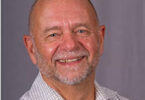
People used to ask if I was a boy or a girl, especially when I was playing sports. All I wanted to do when I grew up was play shortstop for the Mets. I didn’t want to be a woman, that’s for sure. My father and older brother loved that I was a jock. It was our bond, a passion for sports. It was all we could talk about. Obviously, my mother wasn’t happy about this.
When I was forced to watch the Now You Are a Woman film in the PS 99 auditorium when I was nine, I fainted, and my mother had to revive me in the principal’s office.
She died a few months later, leaving me ill-equipped to deal with what was coming. Life was sports and grief before the outbreak of puberty, a nightmare in which most of the girls rejected me for being different, and worse, the boys no longer wanted to play sports with me.
I went through various phases: I had a bizarre long-distance relationship with a 14-year-old boy when I was 15 that ended after he dropped my ID bracelet in the Bermuda Triangle on a family vacation.
I developed crushes on my female coaches and teammates and obsessed about whether they were lesbians.
I became an ardent feminist, subscribing to Ms. and Women’s Sports, and corrected my father’s sexist language.
From what I saw, women were angry, women were dissatisfied, women did the dirty work, women were dirty, women’s bodies were dirty and dangerous, women died young. Not for me, thanks.
As I got older, it became clear that my father was obsessed with sex, so being a girl around him didn’t feel safe. It was easier for me to shut down my female self completely.
In college, sports, school, and increasingly sex dominated my thoughts. I came out as bisexual when I developed two crushes, one on a male friend who felt the need to continually point out all the lesbians on campus, and the other on a lesbian separatist who had a bright red woman’s symbol with a fist in it on her motorcycle helmet.
Fast forward to age 36, when I came out . . . as a woman. I did this in dramatic fashion by changing from baseball cap and black sweatpants, into a low-cut, forest green cocktail dress on stage in front of 200 of my closest friends at a queer community theater show. A room full of gay men whistling at me, and I felt like a goddess.
When I was 37, I had a relationship with a man for the first and only time. My boyfriend even went with me to visit my father and stepmother in Florida the week before my father died. My grief and my boyfriend’s uncertainty about monogamy hurt the relationship. My reaction to thinking that he cheated on me, was to go to Rite Aid and buy teal, purple, and royal blue nail polish, which I hadn’t worn since that week when I was twelve.

We broke up a couple of months later, during rehearsals for the next show. It was a parody of The Wizard of Oz, done primarily in drag. I played Auntie Em, absolutely the most boring role. A week before the show, we had a drag party to teach the first-time drag queens how to apply makeup. When I was all made-up, my friend Steve raised his painted-on eyebrow and said, “You look hot!” That was it. The next day I went back to Rite Aid and bought a tube of Max Factor Sparkling Bordeaux lipstick, and I was hooked.
I decided to make Auntie Em Uncle Henry’s very young second wife, and I wore eye shadow and blush to go along with my lipstick. Dorothy was played by a 6’3″ Argentinian named Armando, and it was quite a sight to see us in our matching gingham dresses. I had prettier legs. I had gone from living in black and white to living in color. Welcome to Oz!
Back then, I loved the whole world of lipstick, lip balm, lip gloss, lip liners, lip pencils. How decadent it all is, with minimal risk, depending on how much plutonium is present. I could wear plum wine, honey, or cappuccino and not get drunk, fat, or wired, or have to go to a 12-step meeting for it. And “it won’t kiss off on him.” We can’t have that!

I had many Revlon revelations, the most important one being that some women wear makeup to reveal their feelings of inner beauty, and some wear it to cover up feelings of inner ugliness. You can hide by wearing too much makeup, just like you can hide by not wearing any. And is it a coincidence that the major color choices of nail polish and lipstick are variations on fresh and dried blood? We find women attractive when they look like they just ripped someone to shreds. I prefer dried blood because I hate for anyone to see me in process. I want to look like I’m done!
So, here I am at 62. I came out again, as nonbinary. Male and female, God created me them.
I rarely wear lipstick, but I do wear my version of nail polish art sometimes. “What happened?” you may ask. The lipstick was just a phase. G&S
Queer Stories in G&S are dedicated in memory of Holden McCormack and edited by Robin Goldfin





Leave a Comment